
You aren’t alone if the only citrus fruits you can think of are oranges and grapefruit! Many people haven’t heard of so many citrus fruit varieties out there. Use this guide to explore the shapes, colors, and tastes of different types of citrus fruits from around the world.
What are citrus fruits?
Citrus refers to the fruit-bearing shrubs and trees in the family of Rutaceae plants. The genus includes famous fruits such as oranges, limes, lemons, and grapefruits, to name a few.
Most varieties are native to Southeast Asia, although many genetically modified species have been created elsewhere.
Be it popsicles, frozen fruit treats, refreshing drinks, or as an ingredient in cooking various dishes, citrus fruits are widely consumed worldwide.
One thing that sets citrus fruits apart is the thick rind and pulpy center. The rind is where the oils and aromatics are located and where the citrus extracts are taken from. The inside is similar as well. It’s usually divided into two juicy segments.
Known for their sweet and tangy flavor profile and their health benefits, citrus fruits are a true gift from nature.
Learn more about the different types of these luscious fruits in the comprehensive article below.
Health Benefits of Citrus Fruits

Citrus fruits are not just packed with a tangy and zesty flavor but are also full of vitamins and other vital nutrients that are beneficial for your health. The following are the top reasons why citrus fruit should be a welcome addition to your diet:
- Vitamin C. They are rich in vitamin C, which can help strengthen the immune system and fight against the common cold, flu, and other viruses.
- Antioxidants. Citrus fruits contain various plant compounds that are safe and all-natural antioxidants and anti-inflammatory agents.
- High-Fiber. They are a good source of fiber. Fiber improves the digestive system, lowers bad cholesterol levels, and can help with weight loss.
- Minerals. Citrus fruits contain various minerals that are said to help maintain bone health and regulate blood pressure and blood sugar level.
- Cancer Prevention. According to research, eating a sufficient amount of citrus fruits may lower the chances of cancer, including stomach and esophageal
- Heart Health Minerals such as magnesium, potassium, and phosphorus are known to reduce hypertension.
- Mood-Enhancing: Citrus is often used for its mood-enhancing effect.
In other words, eating citrus fruits can help keep you healthy and happy.
Besides being packed with nutrients, citrus fruits are extremely low in calories. So, if you are on a weight-loss mission or regularly crave fillers, eating citrus fruits is the ultimate way to satisfy your appetite.
Main Types of Citrus Fruits
Citrus fruits are an ancient type of food. They have been cultivated around the world for thousands of years. To date, markets are brimming with various varieties of bright and luscious oranges, lemons, and other zesty fruits.
However, initially, there were only three main citrus fruits: mandarins, citrons, and pomelo. All the other varieties, like lemons, limes, grapefruits, and more, are derived from these main species.
Let’s look closer at these three types of citrus fruits.
1. Mandarin
Scientific name: Citrus reticulata
Mandarine, mandarin orange, or simply mandarin for short, is one of the true varieties of citrus fruits. This species is native to China and highly revered for various reasons. The locals believe that the fruit represents hope and brings about good fortune, which is why it is common amongst the Chinese to gift mandarins to friends and family members during New Year’s celebrations.
Moreover, the dried peel of mandarin is used in Chinese medicine to treat several health issues. Mandarins are 4 to 8 cm in diameter and have a slightly flattened spherical shape. They mostly taste sweet with just a hint of sourness.
2. Citron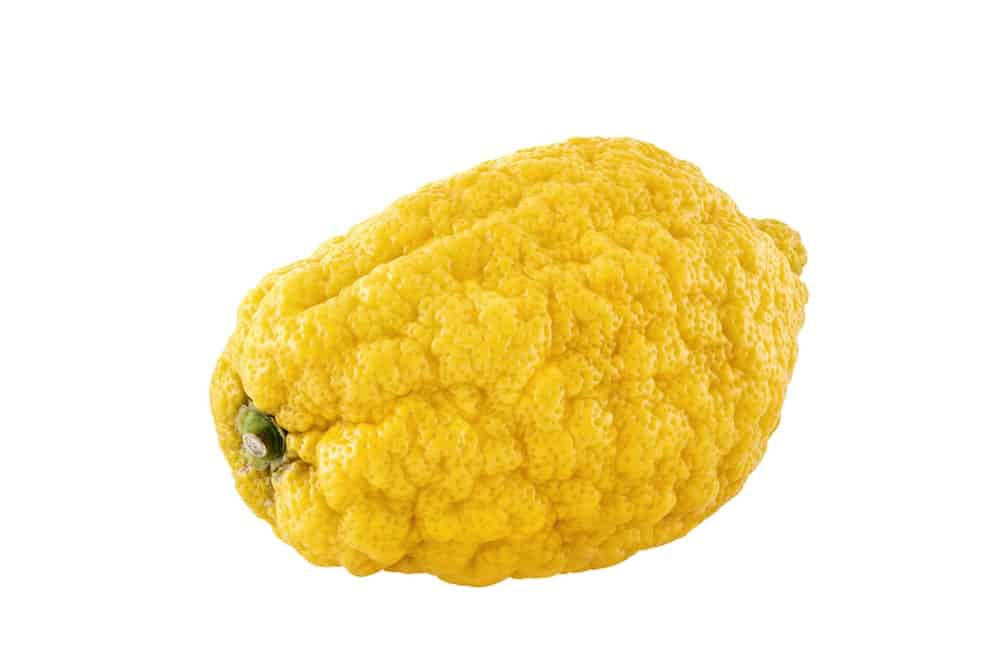
Scientific name: Citrus medica
One of the true (non-hybridized) varieties of citrus fruits, the citron is a large yellow-colored fragrant fruit widely used in Asian cuisines.
It also has medicinal value and is presented as a religious offering in many countries. There is a variety of citron called a Buddha’s hand. It is just like this fruit, but the little fingers begin to open as it ripens.
3. Pomelo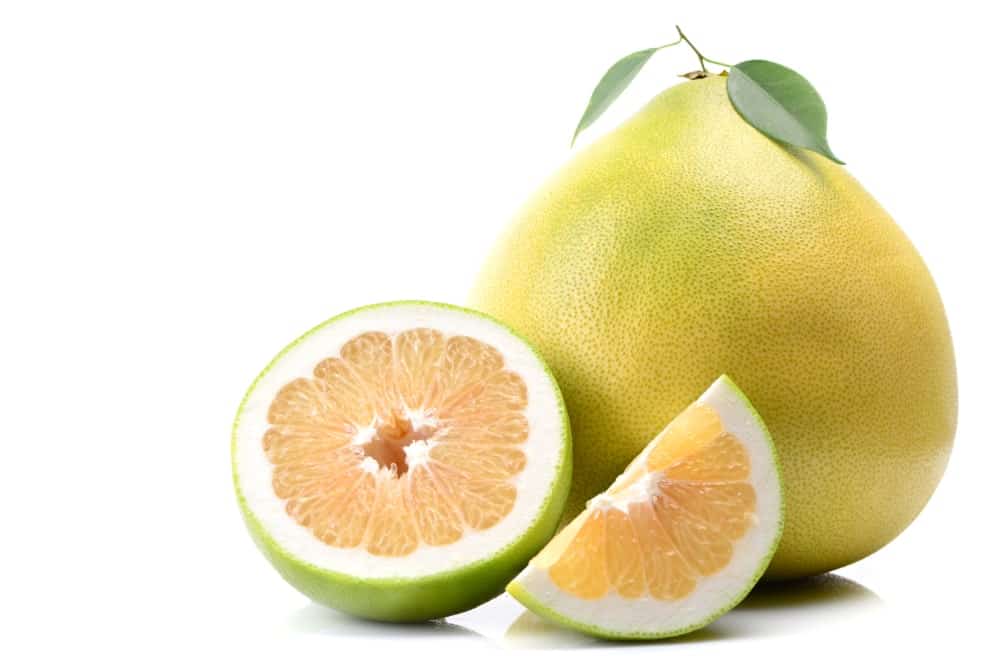
Scientific name: Citrus maxima
The pomelo goes by many other names; it’s also called a jabong, shaddock, pamplemousse, or pummelo. The nickname shaddock comes from the famous sea captain credited for bringing it to the West Indies.
The pomelo is the largest fruit in the citrus family. It typically measures about 6 to 10 inches in diameter and weighs around 1 to 2 kg apiece. Pomelo contains pinkish-white flesh that can be sweet, sour or a combination of both.
Hybridized Types of Citrus Fruits
The above ancestral varieties taste absolutely delicious, but the limiting factor was that these plants thrive in certain climatic conditions and could not be grown everywhere.
This eventually led scientists to create hardier hybrids so that people worldwide could enjoy fresh and juicy citrus fruits straight from the orchards.
Read on to find out the most popular types of hybridized citrus fruits. The following varieties are newer and made by combining the different types of popular citrus fruits.
4. Orange
Scientific name: Citrus sinensis
A hybrid between mandarin and pomelo, oranges are renowned for their orange color, sweet taste, and strong citrusy smell. They are also called ‘sweet oranges’ to distinguish them from bitter oranges (Citrus Aurantium).
Oranges are believed to have originated in ancient China as early as 300 BC. With over 80 million tons of yearly production, oranges are among the world’s most widely cultivated fruit trees.
This fruit is eaten fresh as well as used for making desserts. Orange peel is also often processed for use in the perfume industry.
5. Tangerine
Scientific name: Citrus tangerina
A further cross between different hybrids of mandarin oranges, tangerines were named after the place where they originated – Tangier, Morocco.
Compared to regular oranges, tangerines are smaller and less rounded in shape but have sweeter flesh and rind. Therefore, tangerine peels coated in chocolate are a common delicacy in various restaurants and dessert bars.
This plant produces juicy orange-colored fruits during spring and summer and is suitable for cultivating in zones 9 and 10 as it requires complete exposure to the sun.
6. Lemon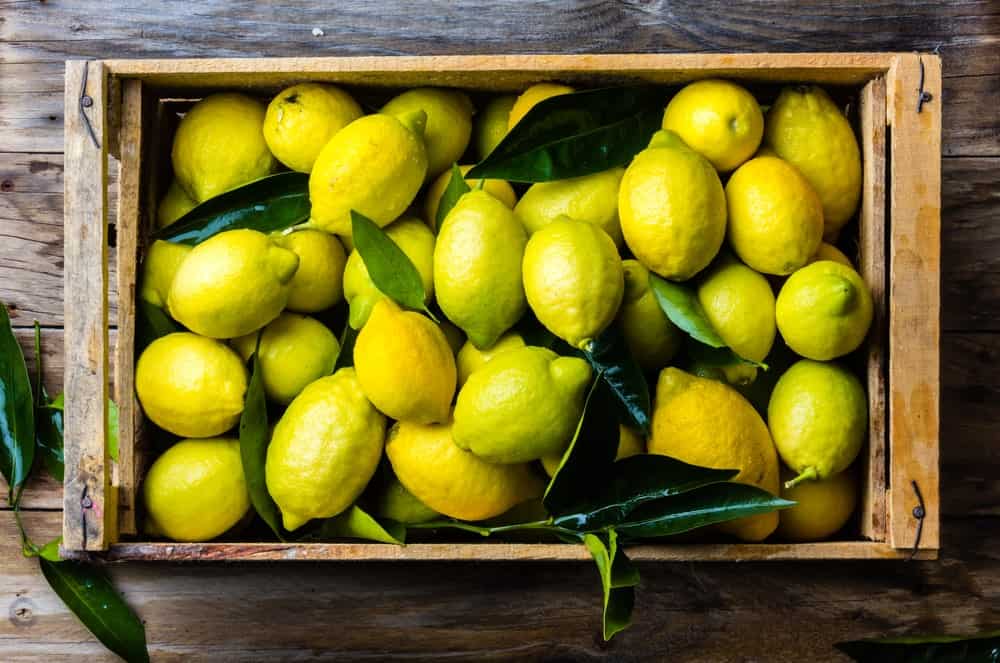
Scientific name: Citrus limon
Whether you use it for culinary purposes, medicinal purposes, as a cleaning agent, or more, lemon is a truly versatile citrus fruit with a huge value in various industries. Lemon juice and lemon peel are used in the food industry worldwide for preparing refreshing juices and tasty desserts.
On the other hand, the cosmetic industry uses the same for preparing different beauty products, including essential oils and other fragrances.
7. Kaffir Lime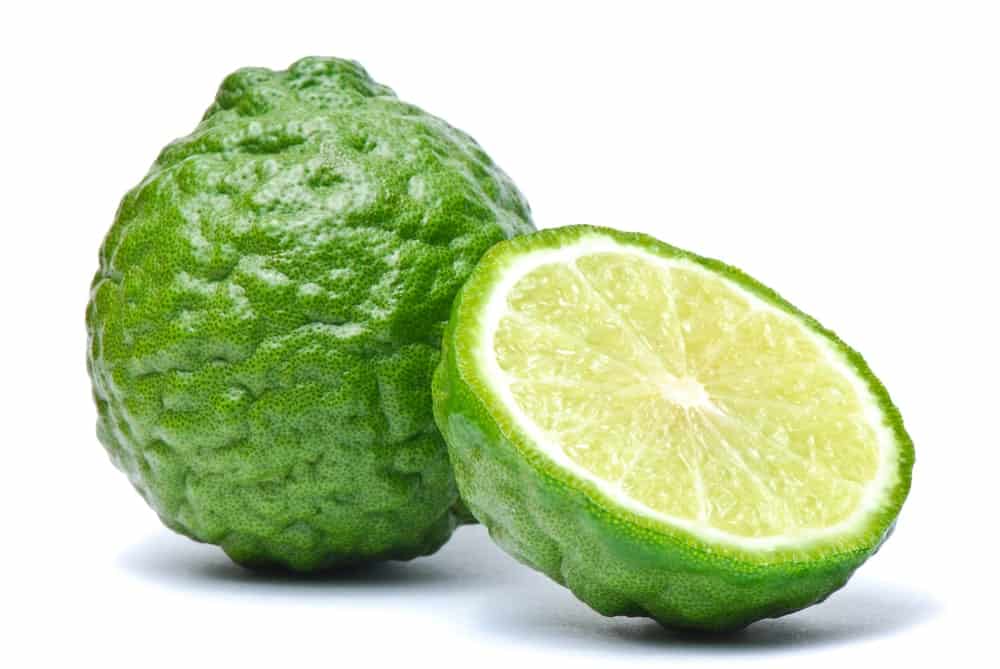
Scientific name: Citrus hystrix
Also called makrut lime or Mauritius papeda, the Kaffir lime is a citrus fruit from tropical Southern China. Be it the fruit or the leaves, kaffir lime is a prominent ingredient in several dishes in Southeast Asia. Its leaves are heavily used in Thai, Indonesian, and Vietnamese cuisines.
At the same time, the fruit is often juiced to prepare vitalizing drinks, aromatherapy oils, and shampoos for treating head lice and other skin problems.
8. Key Lime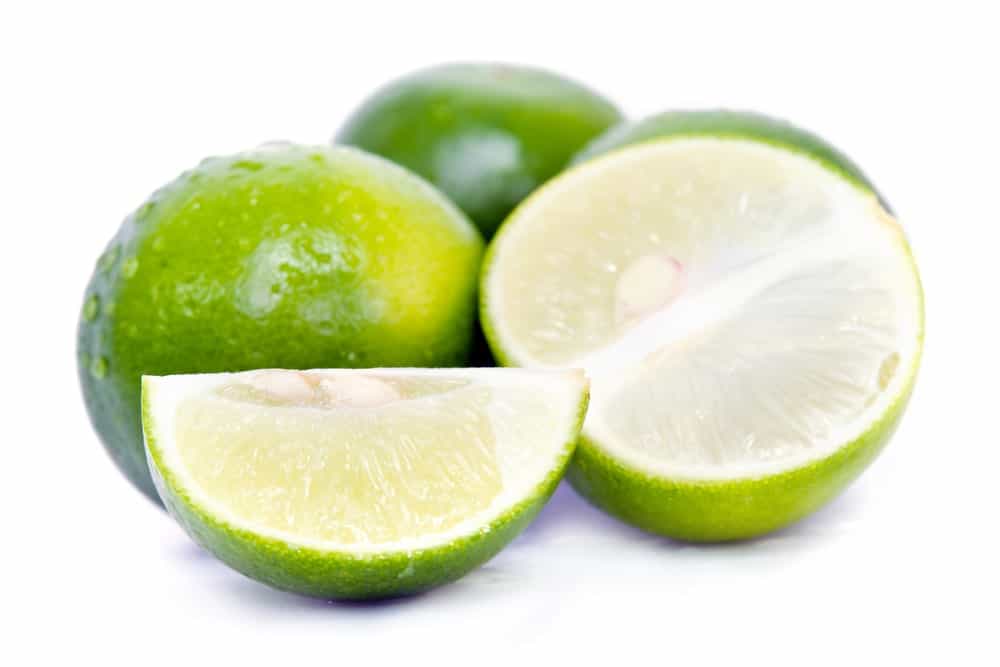
Scientific name: Citrus aurantiifolia
Key Lime is also known as West Indian, Mexican, or Bartender’s Lime. Originating from Southeast Asia, this fruit is a cross between the Citrus micrantha and the Citrus medica. It is quite seedy and has a thin rind and a strongly acidic taste and smell.
The Key Lime’s fruit is small (1 to 2 inches in diameter) and is treasured for its distinct flavor compared to other limes.
Key Lime Pie is a popular American dessert specially prepared using this variety of citrus fruits.
Want to have key limes at the ready? Learn how to grow your own Key Limes here.
9. Kumquat
Scientific name: Citrus japonica
Kumquat is a Chinese name that literally means golden orange. It is a cold-hardy fruit in the citrus family that looks pretty much the same as an average orange except that it is a lot smaller in size – about the size of an olive! Most kumquats are round, but some also come in an oval shape.
10. Clementine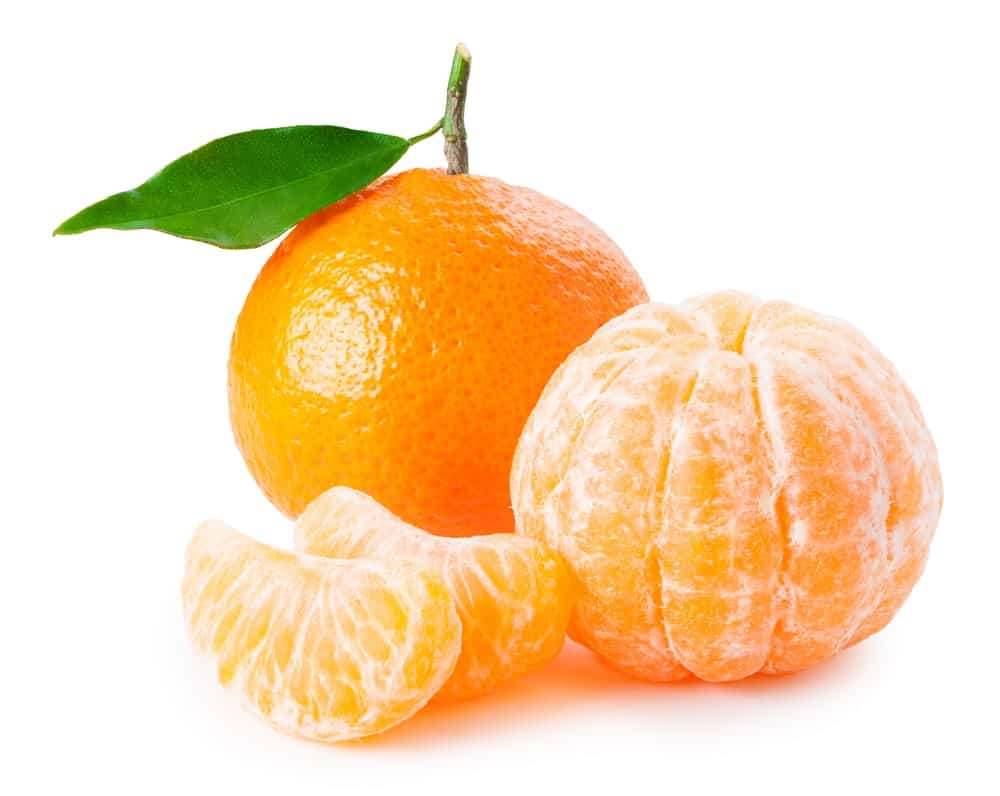
Scientific name: Citrus clementina
Clementines are a type of tangor – a hybrid between a sweet orange and a mandarin orange. The peel of this citrus is of a dark orange shade and is quite smooth and shiny in appearance. Clementines are mostly eaten as is because they are easy to peel, really juicy, and have a more sugary taste than oranges.
This species was created during the 19th Century in Algeria.
11. Blood Orange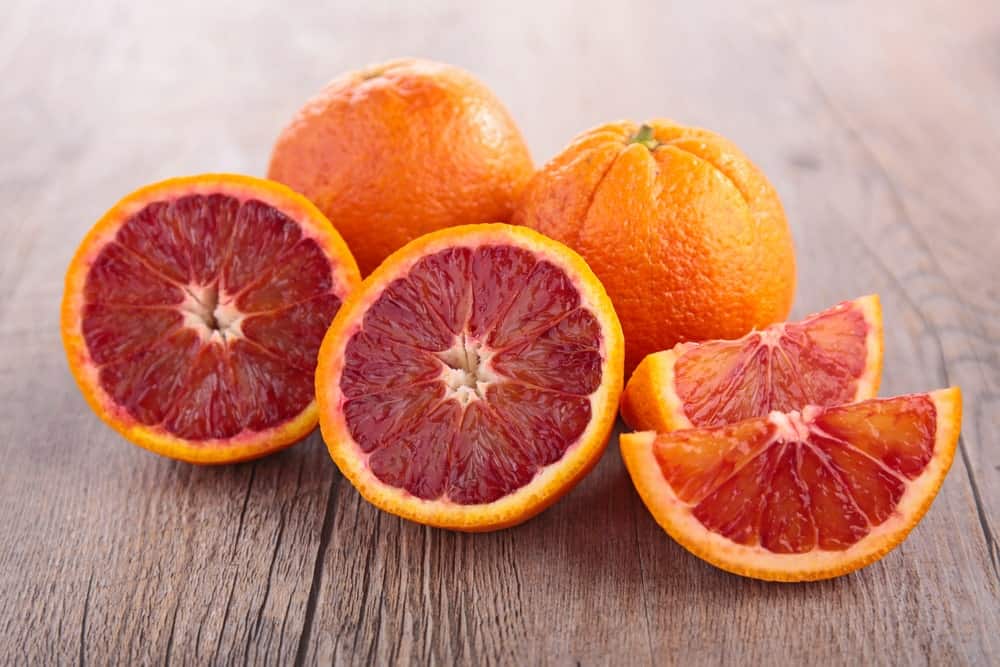
Scientific name: Citrus sinensis
As is evident by the name, the blood orange is a type of orange that belongs to the citrus Sinensis family. Although the bright orange-colored skin of this fruit is no different than that of a typical orange, the flesh contained within is of deep blood-red color. This is due to the presence of antioxidants called anthocyanins that are found only in this type of citrus fruit.
This flavonoid (plant compound) makes blood oranges useful for treating urinary tract infections. The distinctive crimson hue sets this species apart from all other citruses and makes it ideal for decorating fancy desserts and juices. Blood oranges taste somewhat like sour raspberries.
12. Grapefruit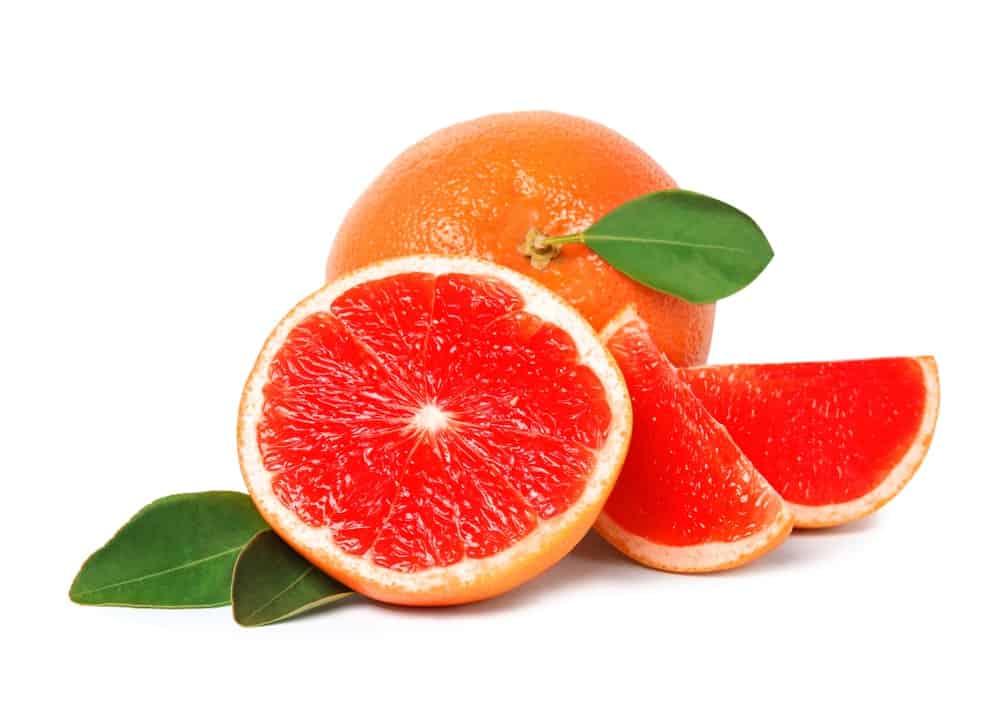
Scientific name: Citrus paradisi
Produced from an accidental cross between a pomelo and sweet orange, the grapefruit was first introduced in Barbados during the mid-18th century. Initially called the ‘Forbidden Fruit,’ this citrus was renamed grapefruit because it grows closely in bunches that look like rather giant grapes.
Based on the cultivars from which it is harvested, the flesh of grapefruits can be creamy white, pink, or even red in color. This fruit has a sour to semi-sweet and sometimes even bitter taste and is usually grown for extracting the juice.
Also, did you know that there are 13 different varieties of grapefruit?
13. Meyer Lemon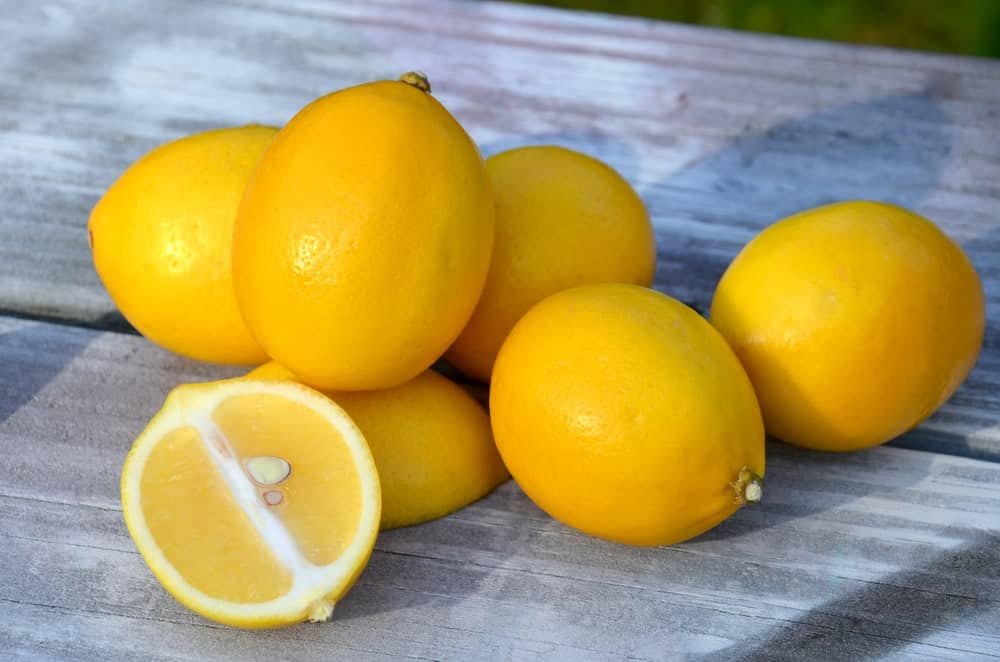
Scientific name: Citrus meyeri
Native to China, the Meyer Lemon results from a mix between citron and mandarin. Meyer was named after the agricultural explorer who introduced the variety in the US.
The tree of Meyer Lemon can reach up to 10 feet and features purplish-white fragrant flowers that mature into intense yellow fruits.
These changing hues form a remarkable display against the leathery dark green leaves throughout the year. Hence, Meyer Lemons are often grown in home gardens for ornamental purposes. The sweet and juicy fruit is just a bonus.
Plant your own Meyer lemon tree
Have you ever thought of planting your own lemon tree so you can enjoy them anytime? Here are a few fun facts about the Meyer lemon tree:
- Originating in China, the Meyer lemon tree was viewed as a decorative plant for nearly 100 years. The tree was later considered a food item once brought to the US.
- Many grocery stores don’t carry this variety of citrus, so you may need your own Meyer lemon tree to enjoy the delicious fruit.
- During the 1960s, nearly all the Meyer lemon trees growing in California were destroyed by a virus. Luckily, one stock of trees was found free of the disease. Those virus-free trees were saved and then used to develop today’s “Improved Meyer Lemon” tree.
Learn how to plant your own Meyer lemon tree here!
14. Tangelo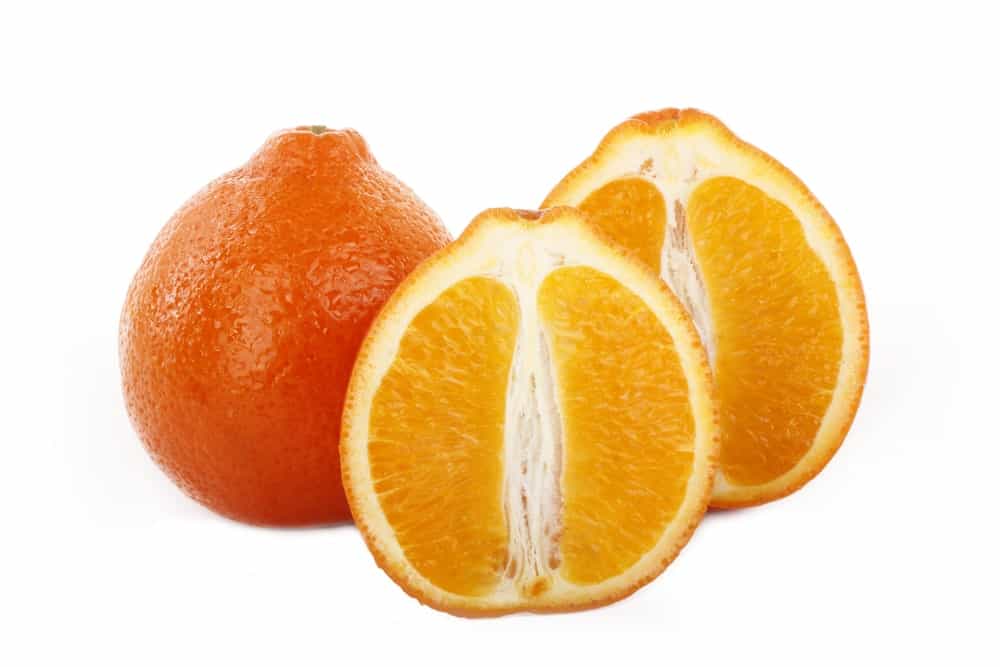
Scientific name: Citrus tangelo
A citrus fruit produced from crossing different hybrids of the Citrus reticulata variety, tangelo (sometimes called honeybells) is a round orange fruit with a protruding head. The word tangelo is derived from tangerine and pomelo because the fruit has properties of both.
Tangelos have a sweet and tangy flesh with a subtle hint of bitterness and are often used as a substitute for regular oranges.
15. Persian Lime 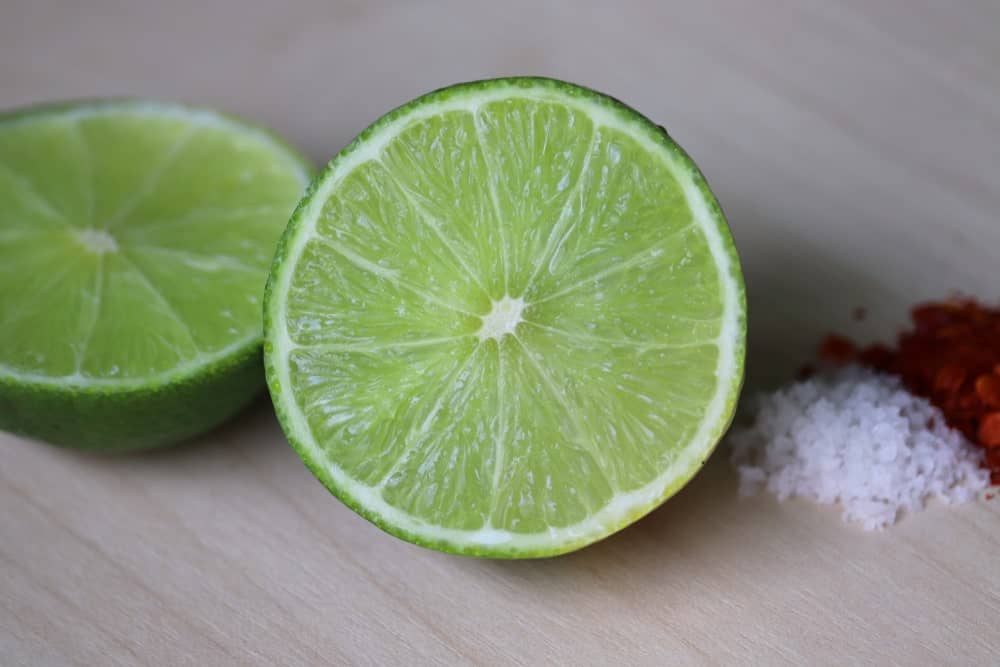
Scientific name: Citrus latifolia
Persian limes are less acidic than their counterparts and are a defining ingredient in many Persian dishes.
16. Sweet Lime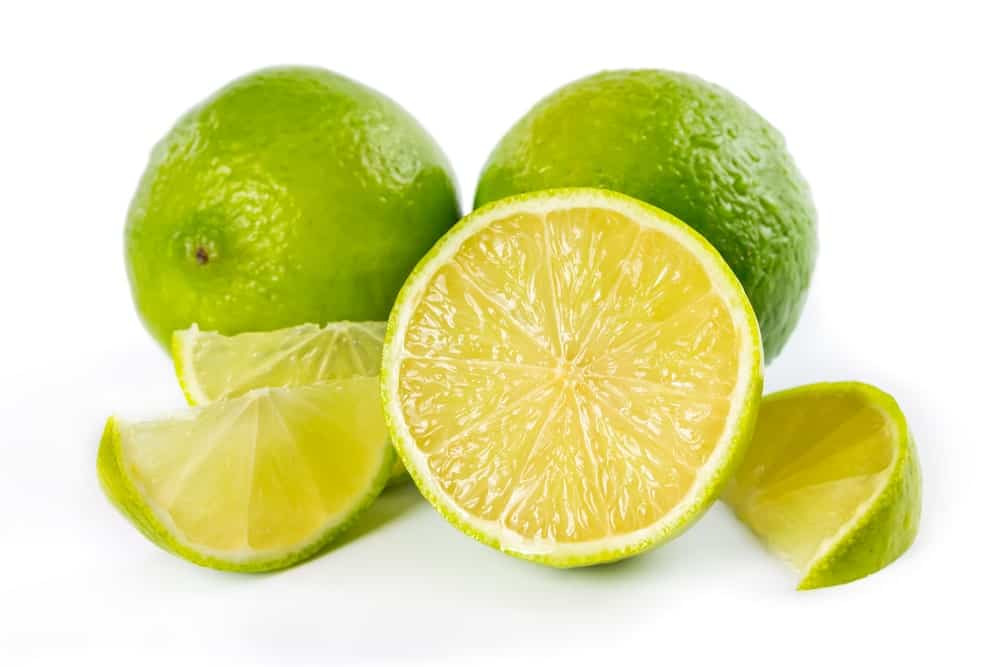
Scientific name: Citrus limetta
Native to South Asia, sweet lime is a lemon cultivar that was produced by selective breeding. It’s known for its mildly sweet flesh and low acidic flavor. Sweet limes are used in countries like Pakistan and India to make lemonades.
17. Yuzu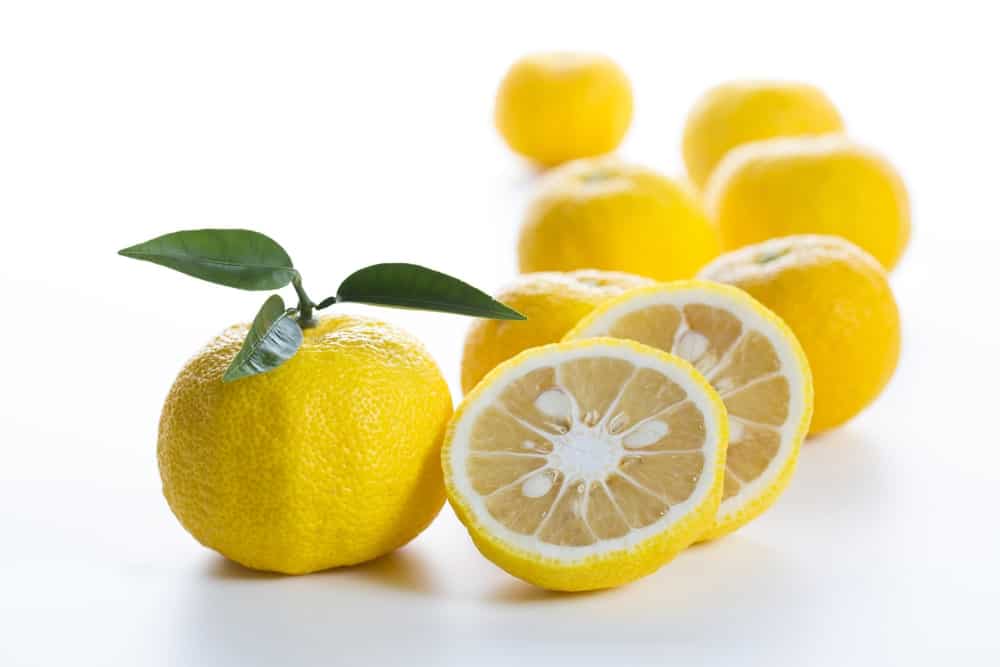
Scientific name: Citrus junos
Yuzu is a lesser-known citrus fruit that is hardly grown for eating directly. Instead, it is squeezed to collect the juice, which is then used to prepare the famous ponzu sauce or other food items such as yuzu vinegar or yuzu tea.
18. Ugli Fruit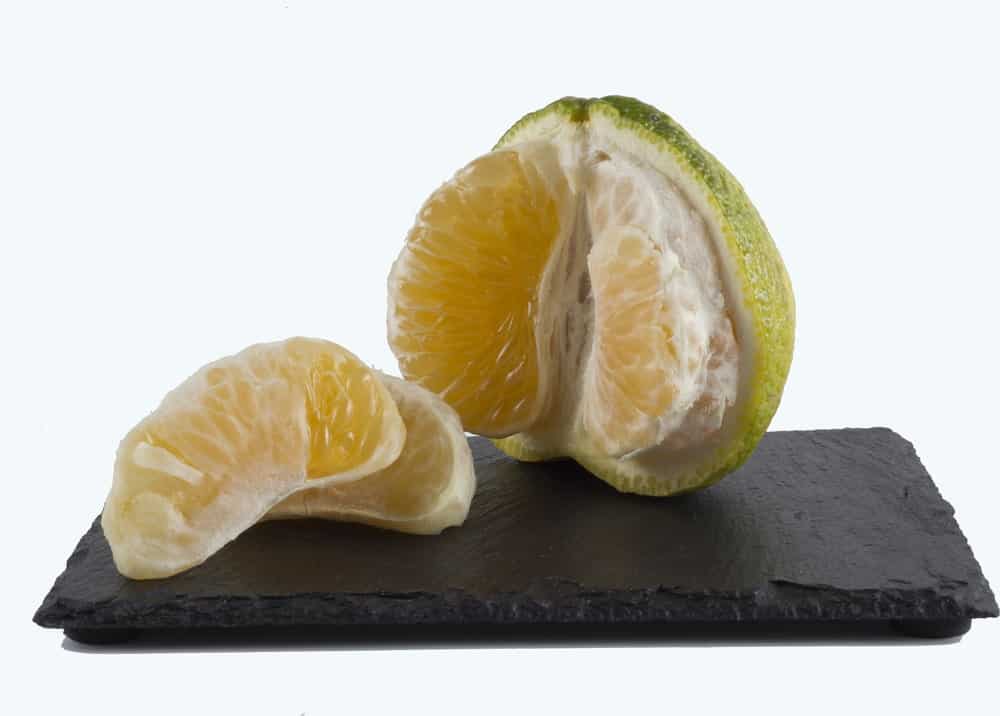
Scientific name: Citrus reticulata × Citrus paradise
Don’t be deceived by the name or the appearance – it may be ugly, but this fruit does not fall short of flavor. This fruit originated from the Jamaican islands and has wrinkled skin surrounding pulpy flesh.
